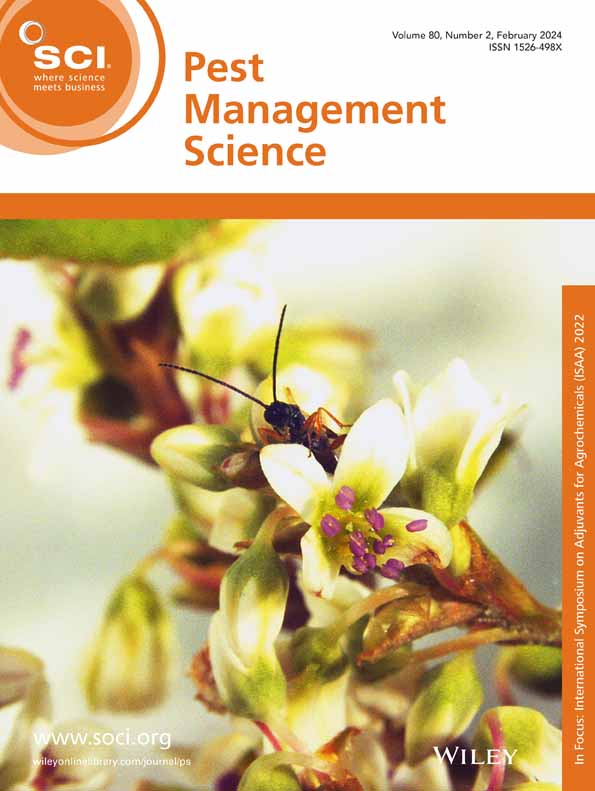Inferring herbicide non‐target‐site cross‐resistance from dose response and mixture treatments
IF 3.8
1区 农林科学
Q1 AGRONOMY
引用次数: 0
Abstract
BACKGROUNDHerbicide cross‐resistance is of increasing concern because it compromises the effectiveness of both existing and new chemical options. However, a common misconception is that if a weed population shows dose–response shifts to two herbicides, it is cross‐resistant to both. The possibility that individual plants may possess different resistance mechanisms is often overlooked.RESULTSTo better characterise non‐target‐site cross‐resistance, we propose that the accession be treated with mixtures of the two herbicides of interest. A population model could be used to simulate the expected dose responses to the mixtures, assuming different cross‐resistance levels in the population, as well as synergistic or antagonistic effects between the two herbicides. The simulated responses can then be compared with the actual responses, and the cross‐resistance level approximated. We demonstrated this approach from a mathematical standpoint and validated it with experimental data from glasshouse tests on four well‐characterised biotypes of从剂量反应和混合处理推断除草剂非靶点交叉抗性
背景除草剂交叉抗性日益受到关注,因为它会损害现有和新化学选择的有效性。然而,一个常见的误解是,如果杂草种群对两种除草剂表现出剂量反应转变,那么它对两种除草剂都具有交互抗性。结果为了更好地描述非靶点交叉抗性,我们建议用两种相关除草剂的混合物处理杂草。可以使用群体模型模拟对混合物的预期剂量反应,假设群体中存在不同的交叉抗性水平,以及两种除草剂之间的协同或拮抗作用。然后,可以将模拟反应与实际反应进行比较,并近似得出交叉抗性水平。我们从数学角度证明了这一方法,并用玻璃温室中对四种特征明确的多花甘蓝生物型和两种商用除草剂(clodinafop 和 iodosulfuron)的试验数据进行了验证。结果还表明,了解协同作用和拮抗作用等化学相互作用对于更好地估计交叉抗性水平至关重要。对交叉抗性程度的快速鉴定为了解化学轮作或混用是否仍能有效控制对多种除草剂产生抗性的杂草群提供了重要依据。这种方法可更广泛地应用于其他异种生物的交叉抗性研究。© 2025 化学工业协会。
本文章由计算机程序翻译,如有差异,请以英文原文为准。
求助全文
约1分钟内获得全文
求助全文
来源期刊

Pest Management Science
农林科学-昆虫学
CiteScore
7.90
自引率
9.80%
发文量
553
审稿时长
4.8 months
期刊介绍:
Pest Management Science is the international journal of research and development in crop protection and pest control. Since its launch in 1970, the journal has become the premier forum for papers on the discovery, application, and impact on the environment of products and strategies designed for pest management.
Published for SCI by John Wiley & Sons Ltd.
 求助内容:
求助内容: 应助结果提醒方式:
应助结果提醒方式:


